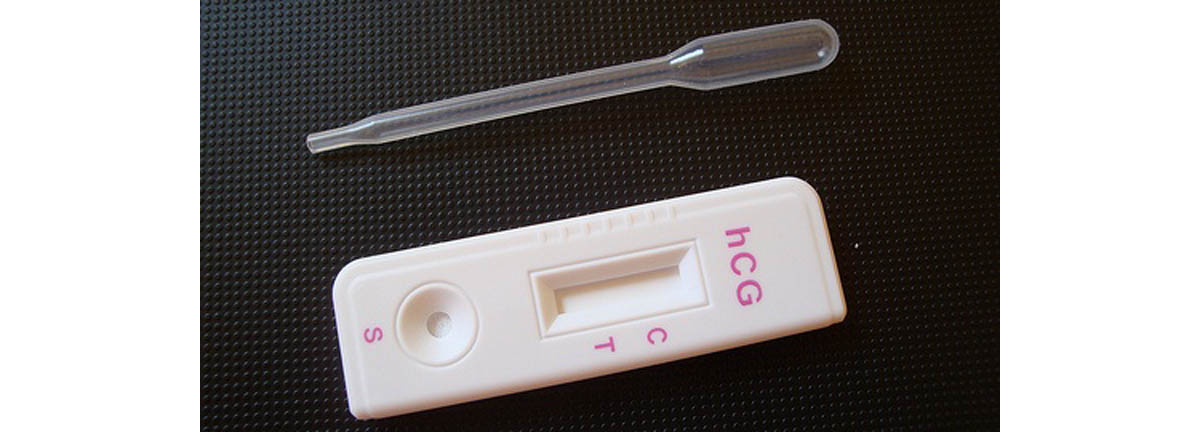Healthy and fertile young couples can easily take up to a year to get pregnant. Are you trying to conceive and hoping you'll see a positive pregnancy test in less time? Finding out when you are fertile can really boost your odds. Here's how.

Why Track Your Ovulation?
Healthy women in their reproductive years who are not taking birth control that prevents ovulation usually release one egg per month. This egg matures from one of the follicles in the ovaries, and the point at which it is released is called ovulation. Following the release of the egg, it remains viable for around 24 hours. Ovulation day and the (approximately) five days before it make up the woman's fertile window — the days during which sexual intercourse can lead to pregnancy.
Determining the day on which you ovulate allows you to plan intercourse to get pregnant, to plan when to avoid intercourse so you do not conceive, or simply to keep track of what is going on with your body.
Why do the days before ovulation count as well? Sperm can survive within the female reproductive system for five days — in some cases even seven days — so doing the deed during these days is certainly not wasted for couples who want to get pregnant.
There are several methods you can use to determine the date of your ovulation. Which method you choose depends on your personal preferences. Some women use more than one way in which to keep an eye on their menstrual cycle.
Ovulation Tests
Ovulation tests, also called ovulation predictor kits (OPKs), are the ovulation equivalent of the pregnancy test. An ovulation predictor kit is an at-home urine test to determine whether you are ovulating. Ovulation tests have a few distinct advantages over other ovulating-tracking choices, but they also have some drawbacks.
Women who choose to use ovulation tests give themselves access to the single most reliable way to find out when they are ovulating. Using ovulation tests is simple and not very labor intensive. It can, however, be pricey. You still have to find a way to work out approximately when you ovulate, if you don't want to test every day after your period ends — which would be a waste of money.
OPKs are right for you if you are hoping to find out if you ovulate at all, how long your luteal phase (the second stage of the menstrual cycle) is, or if you are an organized person who just needs to know everything for sure. Ovulation tests are much more user friendly than charting to conceive, for instance.
How do ovulation tests work? You “pee on a stick”, just like you would if you were using a pregnancy test. Luteinizing hormone, the ovulation hormone for which the OPK tests, is most strongly present in the urine in the early afternoon. That is the time at which you want to test. If the ovulation test comes back positive, your fertile window will last approximately another 24 hours.
Ovulation Calendar
Ovulation calendars are a very practical tool that can easily be combined with using ovulation tests. An ovulation calendar uses a mathematical calculation to predict the day on which you may ovulate during your next cycle. You can find ovulation calendars online, but it's also possible to make the same calculation yourself.
What information do you need to get an ovulation calendar to give you results that are likely to be accurate? You'll need to know the date on which your last period began, and the average length of your menstrual cycles. Those women who have used ovulation tests or other ovulation-monitoring techniques may also be able to enter information about the average length of their luteal phase. Knowing the amount of days between your ovulation and next menstruation in previous cycles really helps predict what will happen during future cycles.
Online ovulation calendars usually calculate the date the next menstrual period is due, and then count back 14 days — unless the user also specified a luteal phase length. You can, of course, do this in the comfort of your own home with a piece of paper and some basic arithmetic. It's easier to use an online ovulation calendar service. If you are lucky, they'll even send you emails on your ovulation day and three days beforehand. This will remind you to get ready!
Charting To Conceive
Fertility charting, also called charting to conceive, is a comprehensive fertility tracking system. As the name suggests, fertility charting involves a physical chart that lets women know at which point in their cycle they ovulate. It also shows the days leading up to ovulation.

The great thing about fertility charting is that it integrates all the body's natural signs that point to the fertile window. With the help of the internet, fertility charting can be simple and straightforward.
Basal Body Temperature (BBT)
Measuring your basal body temperature (BBT) every day has great benefits. A woman's body temperature is lower during the first part of the menstrual cycle, and then rises slightly during ovulation. It will then remain at the slightly higher temperature during the second part of the cycle, which is called the luteal phase. The temperature will than drop again just before the start of a period.
Charting your body's temperature patterns thus gives a huge amount of information about your cycle. Are you interested yet? The main drawback of measuring your temperature every day is that you should do it early in the morning. Basal body temperature is the lowest temperature your body gets to naturally. This happens during a state of rest, basically meaning while you sleep. BBT should be measured right after you wake up, but before you've been engaged in any physical activity. It should be measured at the exact same time each day to get the most accurate results.
Women who are measuring their BBT should set their alarm at the same time each day, take their temperature and write it down. You can get up after measuring your temperature, or decide to set your alarm very early in the morning and to go back to sleep after taking your BBT. You can create your own fertility chart manually, but most women tracking their basal body temperature will use an online fertility charting service.
Cervical Mucus
Cervical mucus — the mucus produced by your cervix, and which you meet as vaginal discharge in your underwear, or when you wipe — is hardly something you want to give any thought to. Your cervical mucus may be a little gross, but it can provide you with all the information you'll ever need about your fertility.
Throughout the menstrual cycle, cervical mucus changes in structure, color and quantity. At the beginning of the cycle, when your period ends, you will typically not see much mucus. In the days leading up to ovulation, the mucus will become thin, stretchy, and egg-white. This helps sperm reach the fallopian tubes more quickly. When the non-fertile luteal phase starts, mucus will become white, thick, and there will be more of it. Sperm can't get through this easily, and the tick post-ovulation mucus may even keep infections away at a time when the fertilized egg will just be implanting into the uterus.
Now you have an idea of what your cervical mucus may look like at various points of your cycle, you'll want to know how to monitor it. That part is simple — insert a few fingers into your vagina, retrieve some mucus, and examine it visually. Monitoring cervical mucus is easy and hardly takes any time at all.
Ovulation Pain, Spotting, And Tender Breasts
Some women experience a distinct sharp pain or one side of their abdomen. This ovulation pain tells them that they are ovulating, and also lets them know from which ovary (left or right) the egg is being released. Other women experience ovulation bleeding or spotting. It's unclear exactly what causes this light spotting, though it is probably connected to the process of follicles maturing. Tender and slightly swollen breasts are another fairly common ovulation symptom.
If you think you regularly experience ovulation symptoms, it is best to check if they really do coincide with your ovulation, through the use of another ovulation-monitoring method. You can easily write these symptoms down in a fertility chart, but you could also confirm ovulation with an ovulation predictor kit.
- Photo courtesy of jurischk on Flickr: www.flickr.com/photos/jurischk/2933936666
- Photo courtesy of anqa on Flickr: www.flickr.com/photos/anqa/4466990503

